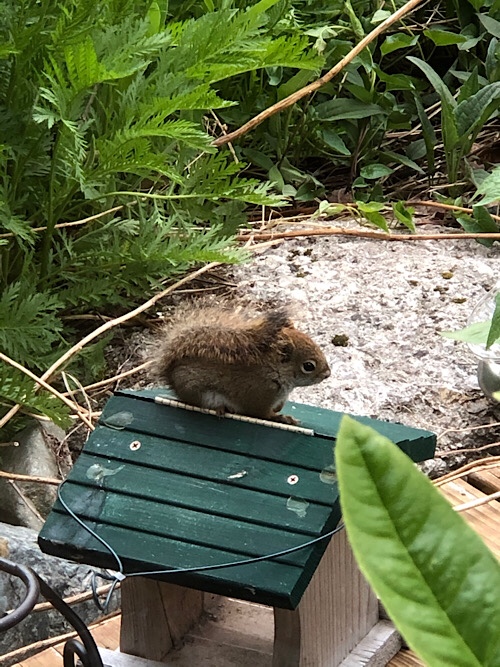Sam tried making tempeh at home with some purchased starter. Looks pretty good!

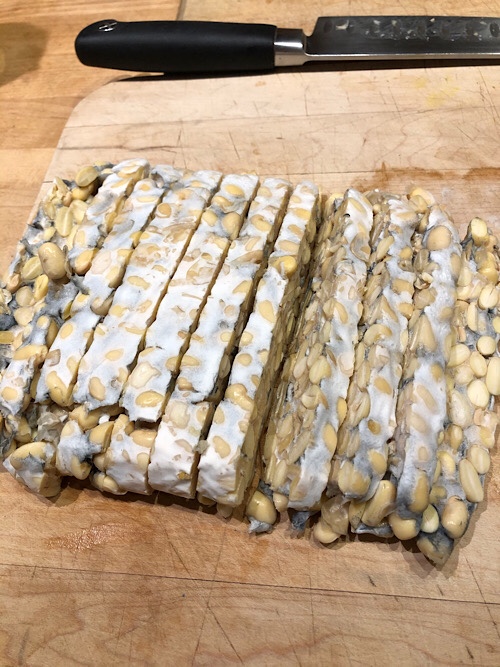
The black areas are edible, they say. They mean the culture has entered its sporulation phase.
our maine home – zone 5b
Sam tried making tempeh at home with some purchased starter. Looks pretty good!


The black areas are edible, they say. They mean the culture has entered its sporulation phase.
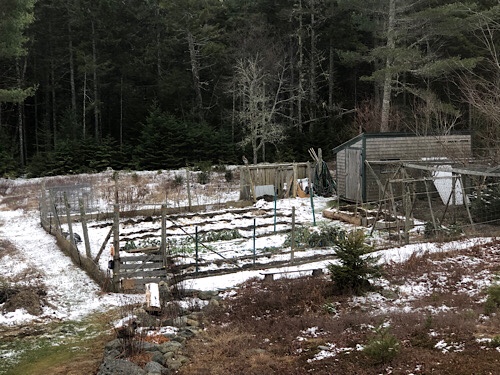
Today we collected a pickup truck load of seaweed from Jellison’s Cove beach. Storms had created knee-high seaweed piles. Freezing temps had solidified the piles somewhat, but stomping on them helped break things apart enough to be able to shovel it. After dumping the pile at home, I immediately spread it on the garden beds and rows by wheelbarrow. I didn’t want it to freeze solid in a pile on the lawn, unusable until springtime.
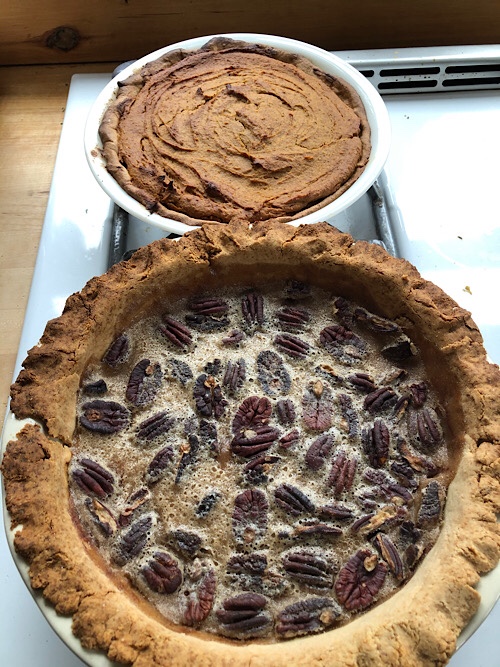
The marathon of holiday cooking started on Wednesday morning with two pies. A vegan pumpkin pie (really butternut squash and some sweet potato) and a vegan pecan pie.
And a beautiful brief snowfall, just perfect to make pies by.
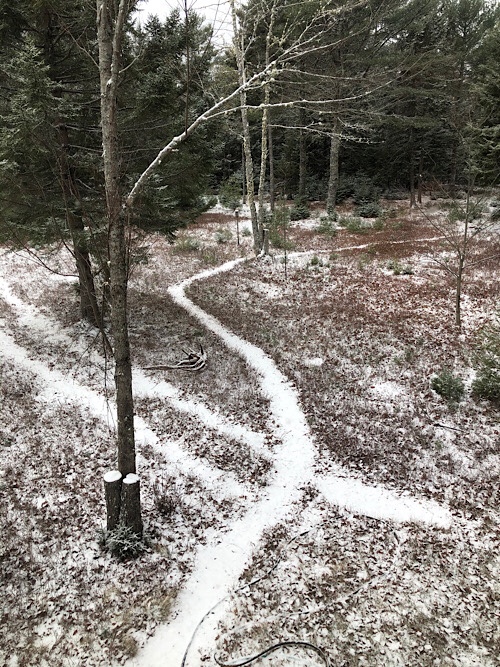
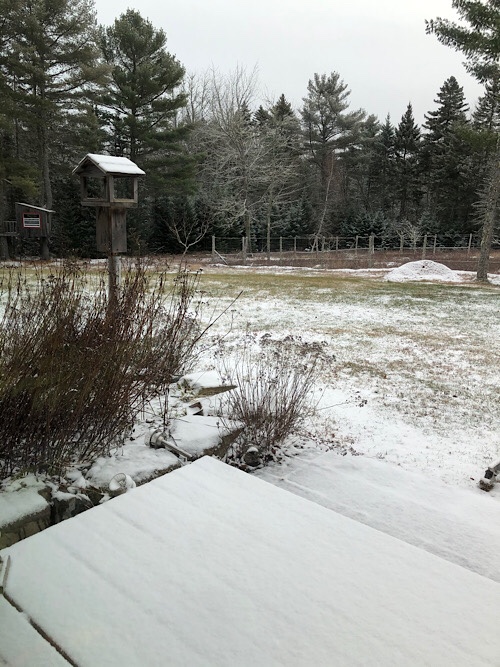
By Wednesday evening it was becoming clear that there would be too much food for Thanksgiving dinner. So we ate the kale farro salad for pre-thanksgiving dinner. An overlooked mealtime until this year!
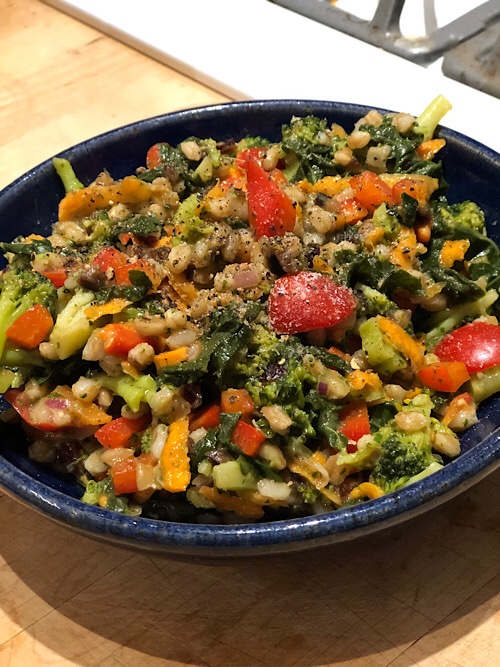
Thursday morning’s bake was this main course: shepherd’s pie with mushroom lentil filling and polenta topping.
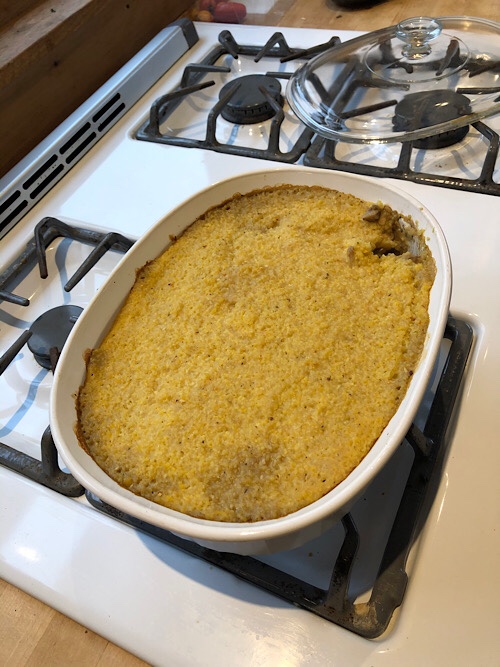
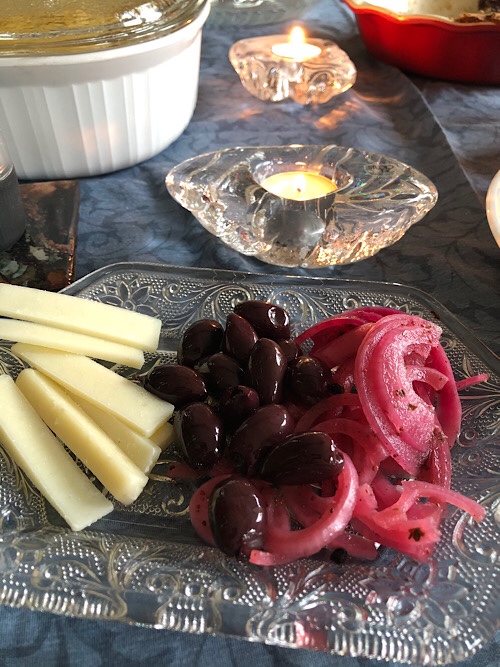
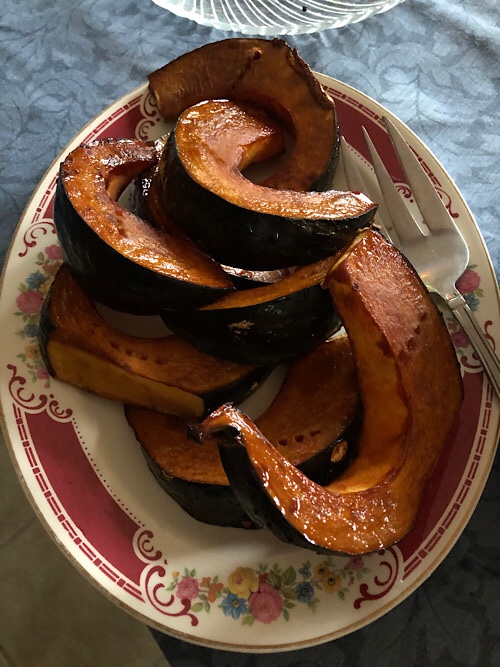
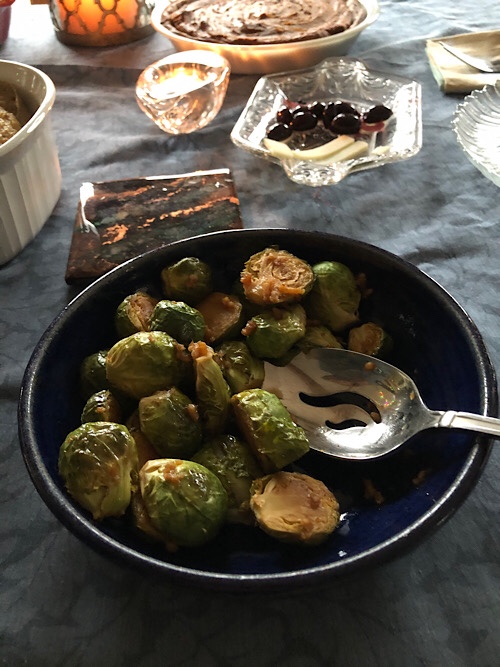

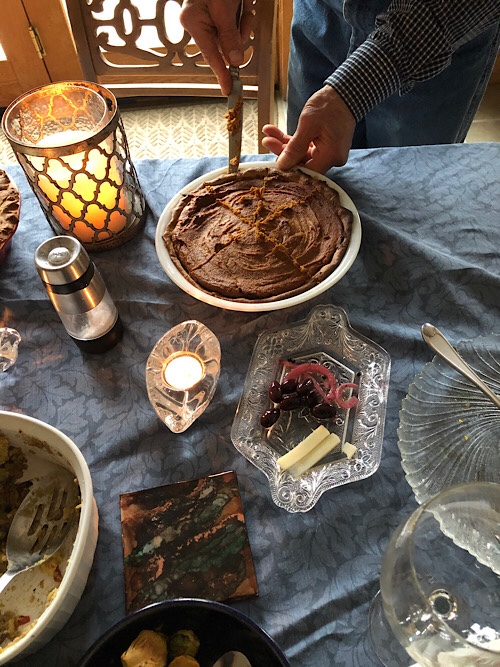
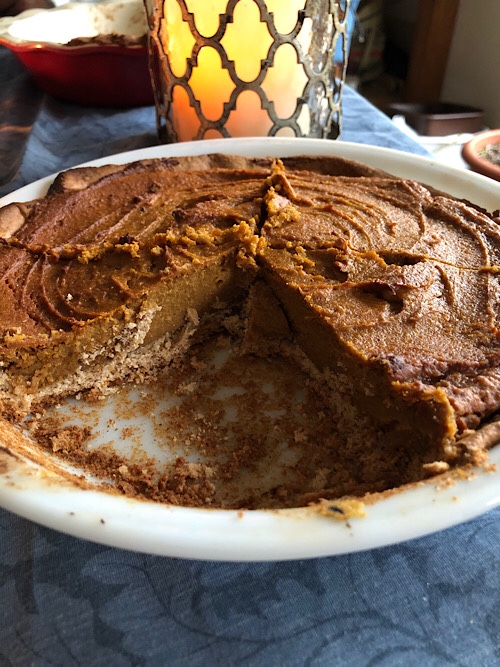
We were overstuffed of course and have plenty of leftovers. It felt weird to have thanksgiving alone at our house due to COVID. But the food was fun and exciting and just the way we like it.

We mulched most of the beds for winter. The two near the back got a layer of chicken coop waste covered by a layer of straw. The other beds got waterlogged straw, picked up from J&P Farmers Market. And some leftover hay.
The strawberry bed got a light layer of mulch. It really needs the blighted leaves pulled off and more mulch. Maybe later.
What’s left in the garden? A nice patch of leeks, quite a lot of kale, some juvenile broccoli that I don’t have much hope for, and mostly bygone escarole. A row of half-hearted spinach.
It’s definitely getting to be wintry out there.
Time to harvest that red cabbage that’s still growing out in the garden.
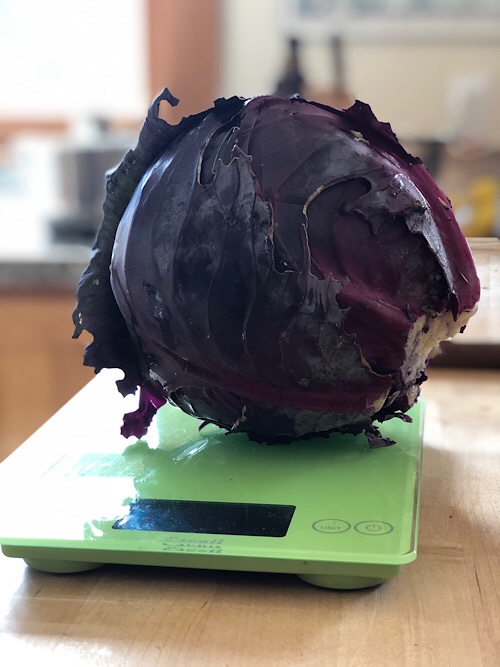
I think it weighed about four pounds? Didn’t make a note of the weight and forgot, of course.
Beautiful red coloration on the outer leaves.
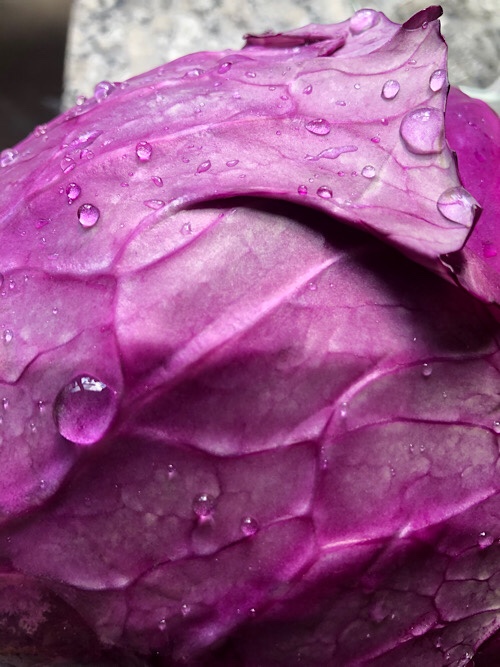
And the interior was just packed with growth and very juicy. Perfect!
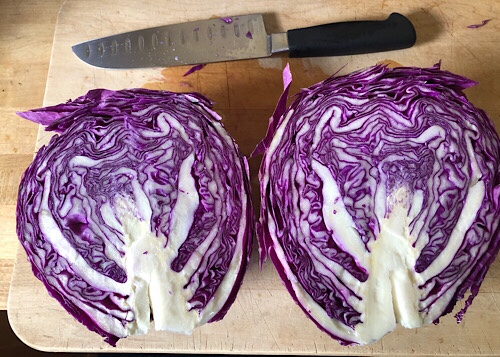
Shredded it all up in the food processor and massaged in salt. Now to ferment. I’ve never made sauerkraut with red cabbage before so we’ll see how we like it.
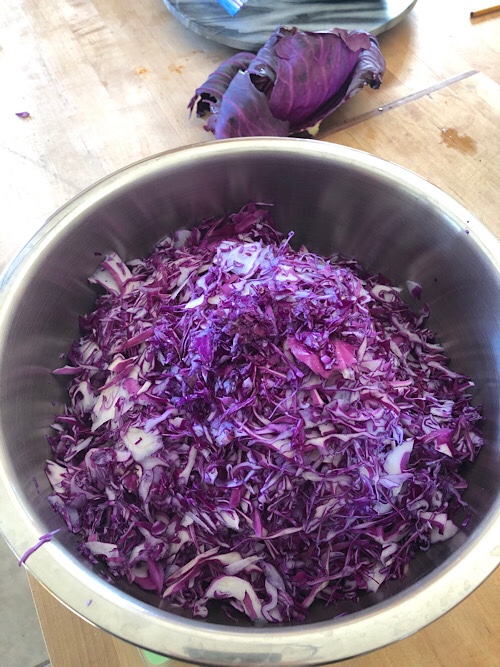
Shout out to my sourdough starter microorganisms! They have never failed to double overnight when fed ground rye berries and water.
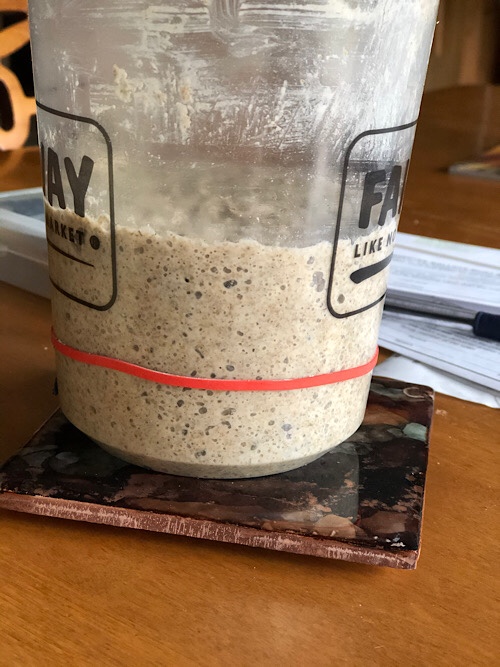
A busy kitchen this morning with frost on the ground and the woodstove going. The coziness almost mitigated the ominous news about the Supreme Court. I have to keep remembering to return my mind to mutual aid as a principle. Feed the hungry. And take care of the land that feeds us.
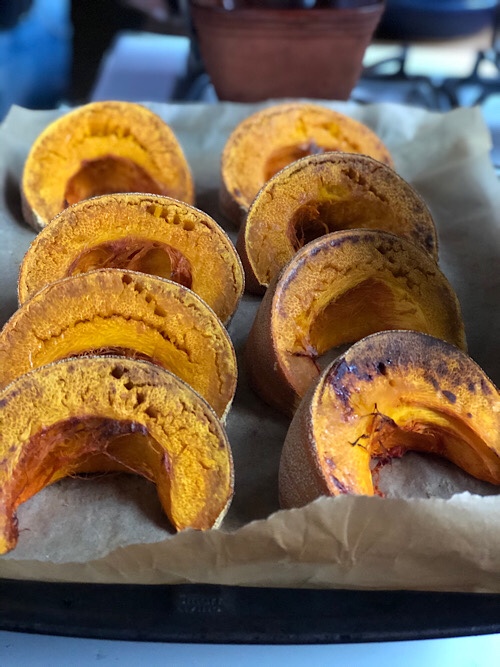
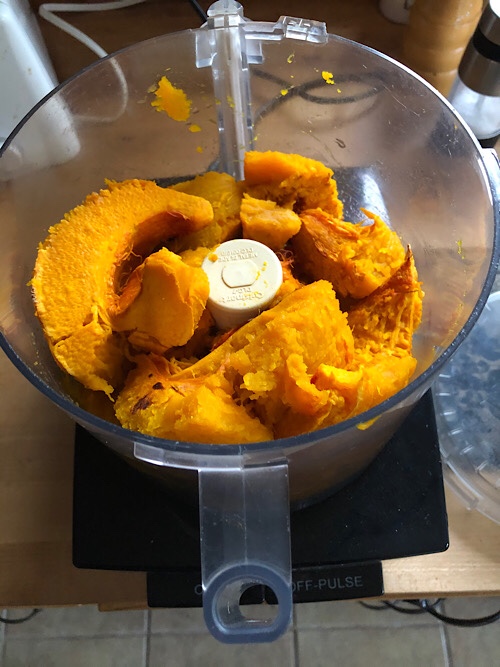
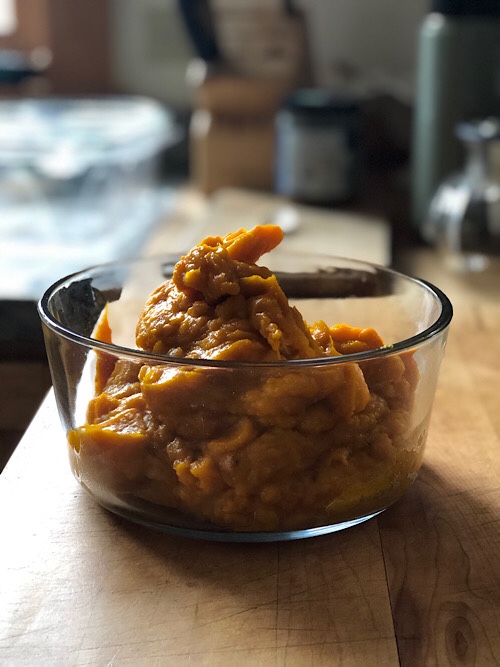
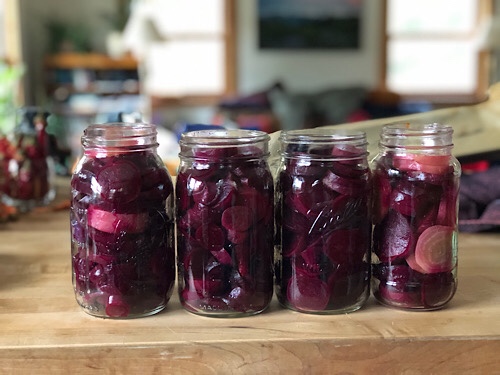
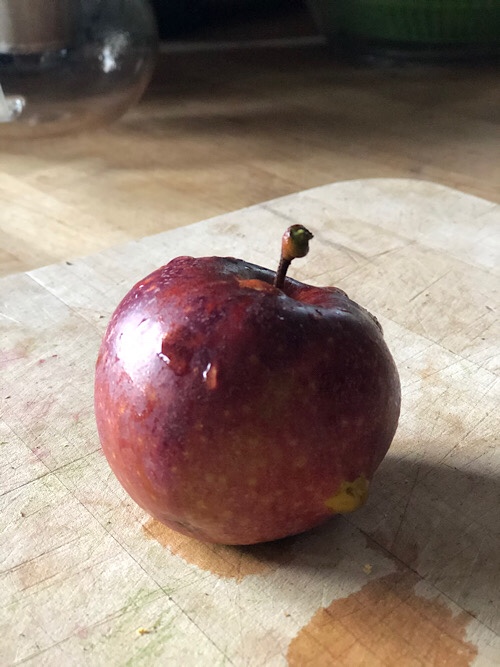
I harvested this massive Farao cabbage. Six pounds! A bit overdone as it was splitting and had some rotten leaves at the base.
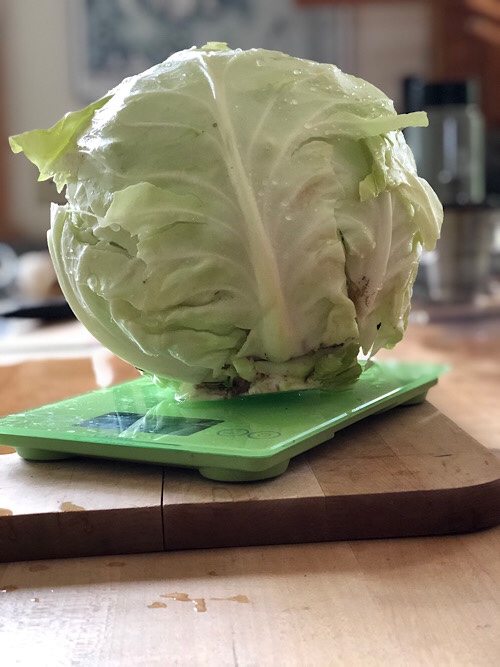
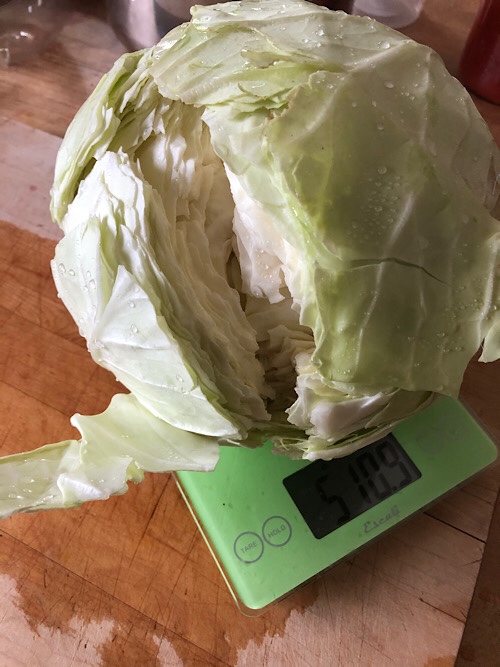


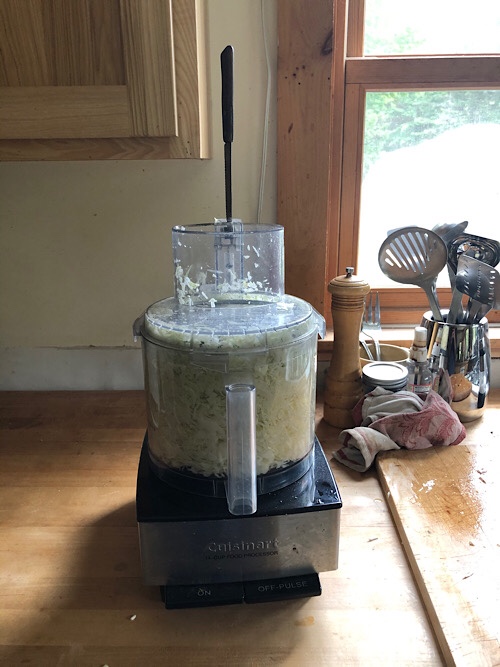
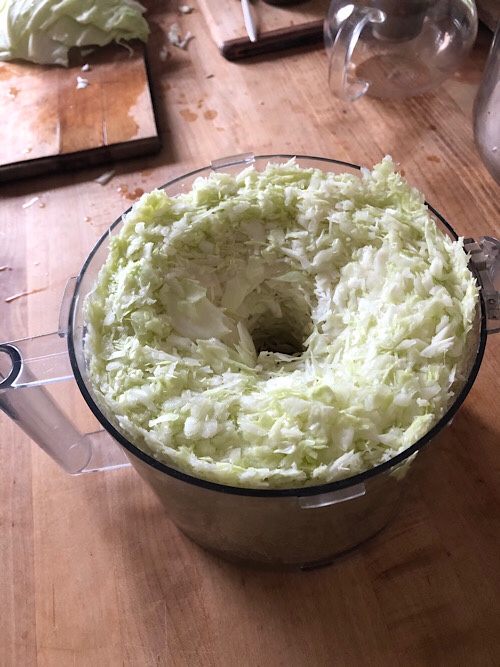

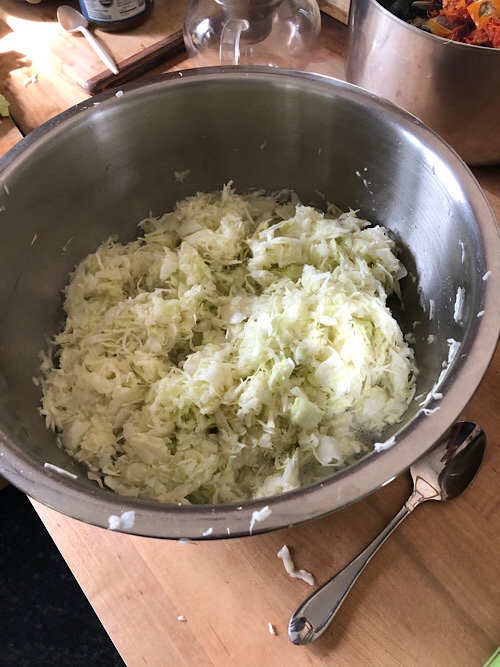
We then place the kraut in a well-cleaned and sanitized crock. A little sauerkraut juice from the previous batch is added as a starter. A few cabbage leaves and weights hold the shreds under the brine for anaerobic fermentation. Lastly the lid is put on and a little water is poured in to the moat.
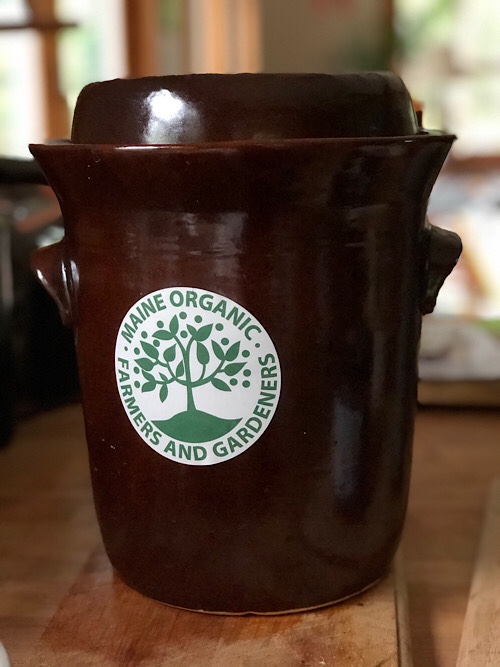
Bubbles started coming up though the moat within a few hours. It’s a very companionable sound.
Updated to show results after about a week of fermentation:
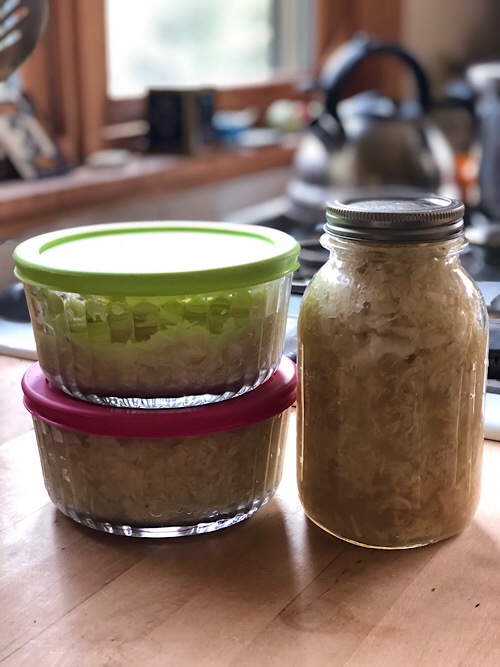
I harvested a cabbage on July 20. Pretty early! This is from a seedling bought from Chuck, variety “Farao.”
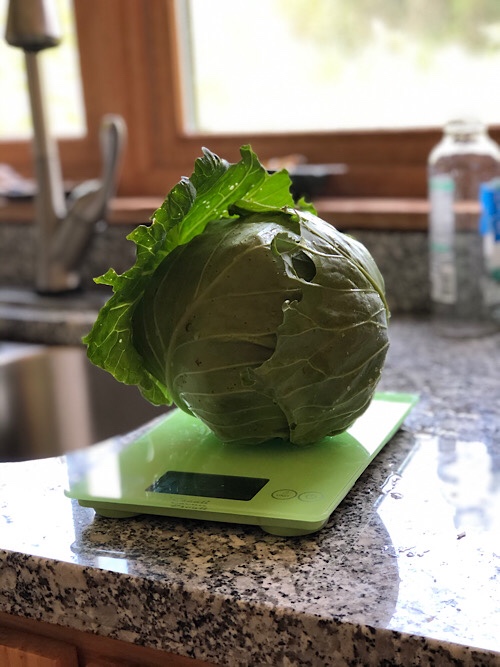
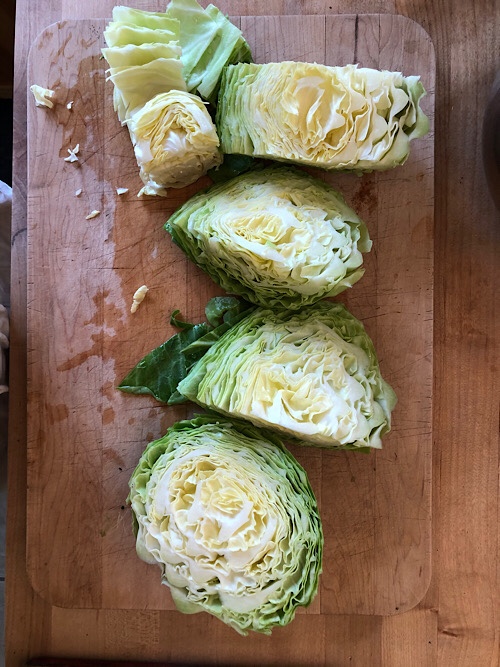
We shred cabbage in the food processor using the 2mm blade. Then weigh in grams, calculating salt as 2 percent of that weight.
Massage in salt, let sit, then load into crock for fermenting. This cabbage will make one quart jar of kraut.
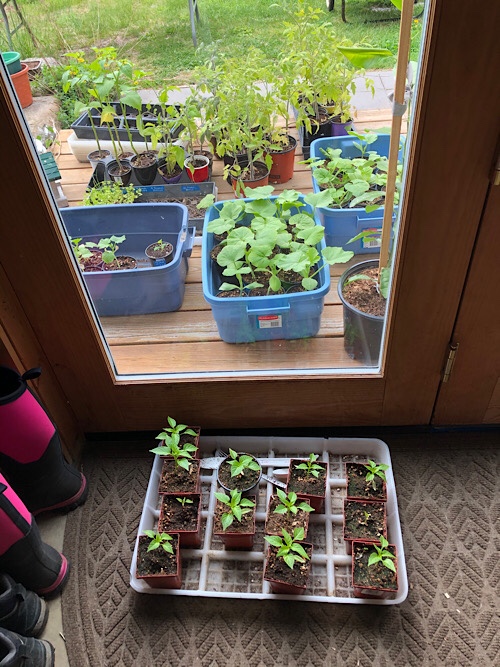
Yesterday I dismantled the indoor seedling operation and cleaned the area. Reclaimed a lot of space in the living room!
Disposition of remaining seedlings:
I’ve got a lot of planting ahead of me this week with these and direct seeding.
